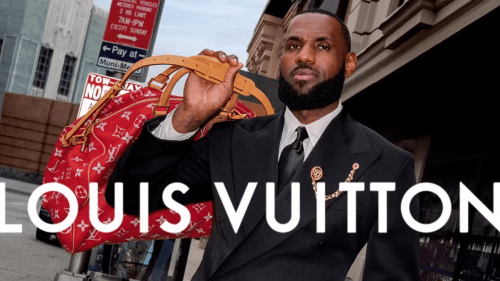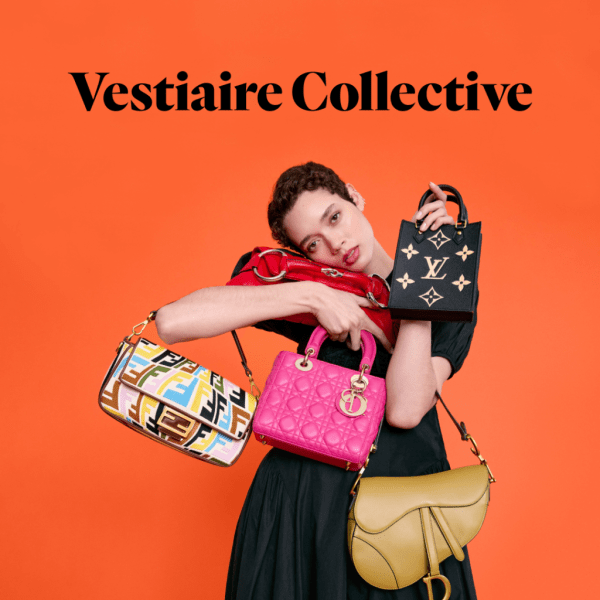Luxury brands represent the pinnacle of quality, exclusivity, and prestige. They are often associated with high prices, limited availability, and a sense of sophistication that sets them apart from mainstream products.
However, the perception of what constitutes a luxury brand is not static; it evolves influenced by cultural, economic, and societal changes.
Understanding how and why these perceptions shift is crucial. The reasons behind these changes can vary significantly across different regions, impacting how brands position themselves in the market. For instance, a luxurious brand in the USA might not hold the same status in Southeast Asia or India.
In the USA and UK, luxury brands often emphasize heritage and craftsmanship, appealing to consumers who value tradition and exclusivity. In contrast, markets like South East Asia and India are experiencing a burgeoning middle class with increasing disposable incomes, leading to a growing appetite for luxury goods. This shift presents opportunities and challenges for luxury brands aiming to establish or maintain their status in these diverse markets.
As the global luxury market expands, keeping abreast of these evolving perceptions is essential to effectively engage with luxury consumers worldwide. By examining the factors that define luxury and how these factors are perceived in key markets, we can gain valuable insights into the dynamic nature of luxury branding.
Defining Luxury: The Core Drivers
High Price Relative to Category
One of the primary indicators of a luxury brand is its price point, which is typically higher than other brands within the same category. This high price is not just about the absolute cost but its relative cost within the market segment. For example, Molton Brown and L’Occitane are considered luxury brands in the personal care category despite their moderate prices compared to high-end watches or handbags.
The perception of luxury is linked to the idea of exclusivity and superior quality, which high prices suggest. Consumers often associate higher costs with better materials, superior craftsmanship, and a more refined user experience, reinforcing the brand’s luxury status.
Limited Supply
Exclusivity is another critical factor in defining luxury. A brand that is not easily obtainable tends to be perceived as more luxurious. Limited supply can create a sense of scarcity and exclusivity, making the product more desirable.
For instance, the Hermes Birkin bag is notorious for its long waiting lists, sometimes spanning years. This artificial scarcity significantly boosts its desirability and perceived value.
Additionally, lesser-known brands like Delvaux or Serapian, which produce limited quantities and are not widely available, often attract luxury consumers seeking unique and rare items. The allure of owning something rare and exclusive is a powerful driver of luxury perception.
Celebrity Endorsement
The endorsement of luxury brands by celebrities can significantly enhance their prestige. When an A-list celebrity or a well-known influencer is seen using a product, it often elevates the brand’s status in the eyes of consumers.
For example, brands like Louis Vuitton and Chanel have successfully leveraged celebrity endorsements to bolster their image. However, the choice of celebrity must align with the brand’s identity and target audience.
A notable example of both success and caution is Juicy Couture. The brand saw a meteoric rise in popularity in the early 2000s, driven by celebrity endorsements like Paris Hilton. However, this association also turned off a segment of potential buyers who did not resonate with the brand’s chosen celebrity image, ultimately impacting its long-term perception and market position.
Additional Elements Enhancing Luxury Perception
Packaging
Packaging plays a vital role in enhancing the perception of a luxury brand. Unique and high-quality packaging can create a memorable unboxing experience that adds to the overall sense of exclusivity and value. Recent trends in luxury packaging demonstrate how brands continue to innovate in this area.
For example, Gucci’s latest collections come in environmentally friendly packaging made from recycled materials, yet they maintain the brand’s signature elegance and sophistication. This approach highlights Gucci’s commitment to sustainability and reinforces its status as a luxury brand through attention to detail and presentation.
Another contemporary example is Apple, renowned for its minimalist and sleek packaging design. When customers unbox an Apple product, the experience is carefully crafted to convey the brand’s premium status. The use of high-quality materials and a seamless design process makes the unboxing feel like an event, adding to the product’s perceived value.
According to a survey by Shorr Packaging Corp, 39% of consumers said they would share a picture of a product with beautiful or unique packaging on social media, underscoring the importance of packaging in luxury branding.
Personalization
Personalization is another powerful element that enhances the luxury experience. Customization options allow consumers to tailor products to their individual preferences, making them feel unique and exclusive. Luxury brands that offer personalization create a deeper emotional connection with their customers, as these bespoke items are seen as more valuable and meaningful.
A recent example is Burberry, which offers customers the ability to personalize their iconic trench coats with monograms and custom linings. This service transforms a classic item into a unique piece that reflects the owner’s personal style.
Similarly, Louis Vuitton continues to innovate with its My LV Heritage and My LV World Tour personalization services, allowing customers to add their initials and select custom patches for their bags. These personalized touches enhance the product’s uniqueness and strengthen the customer’s attachment to the brand.
These additional elements—unique packaging and personalization—significantly contribute to the perception of luxury. They create a sense of exclusivity, attention to detail, and personalized value essential to a luxury brand’s allure.
The Dynamics of Luxury Brand Perception
Market Saturation and Accessibility
One of the most significant challenges for luxury brands is maintaining their exclusivity in the face of market saturation and increasing accessibility. When luxury products become too widely available, they can lose the aura of exclusivity that initially made them desirable. This phenomenon is often referred to as “brand dilution.”
A notable example of this is Michael Kors. Initially celebrated for its high-end appeal, the brand launched a diffusion line, MICHAEL Michael Kors, which offered more affordable products designed to reach a broader audience. While this strategy successfully boosted short-term sales, it ultimately led to a decline in the brand’s perceived luxury status. By 2017, Michael Kors faced declining same-store sales for seven consecutive quarters and had to announce the closure of over 100 full-price retail stores. The brand’s attempt to balance exclusivity with mass appeal resulted in a diluted brand identity, illustrating the risks of expanding accessibility too far.
Changing Consumer Preferences
Consumer values and preferences constantly evolve, influencing how luxury brands are perceived. Today’s luxury consumers are increasingly driven by sustainability, ethical production, and unique experiences rather than just price and exclusivity.
For instance, brands like Gucci and Stella McCartney have successfully adapted to these changing preferences by embracing sustainable practices and transparent production processes. Gucci’s commitment to eco-friendly materials and Stella McCartney’s pioneering efforts in ethical fashion have resonated well with modern consumers who prioritize environmental and social responsibility. These brands have managed to enhance their luxury status by aligning with the values of contemporary buyers.
Conversely, brands that have failed to adapt to these shifting values have struggled. For example, some traditional luxury brands that have been slow to adopt sustainability practices or innovate regarding customer experience have seen their relevance wane. Brands that rely solely on their heritage and past glory without evolving risk losing their appeal to the new generation of luxury consumers.
Understanding these dynamics is crucial for luxury brands aiming to sustain their status. Market saturation and changing consumer preferences are potent forces that can reshape the luxury landscape, and brands must navigate these challenges carefully to maintain their allure. By staying attuned to consumer values and balancing accessibility with exclusivity, luxury brands can continue to thrive in an ever-changing market.
International Perspectives on Luxury
By examining these international perspectives, we can see how regional preferences and cultural factors influence the perception and consumption of luxury brands. Understanding these nuances helps luxury brands tailor their strategies to resonate with consumers in different markets, ensuring they remain relevant and desirable globally.
| Region | Trends and Consumer Behavior | Popular Luxury Brands & Examples |
| USA | – Strong emphasis on heritage and craftsmanship. – Increasing interest in sustainability and ethical production. – High demand for both established luxury brands and emerging designer labels. | – Louis Vuitton: Known for its timeless appeal and quality craftsmanship. – Tesla: Blends technology with luxury and sustainability. – Rent the Runway: Offers access to luxury fashion through rental, catering to environmentally conscious consumers. |
| UK | – Heritage and tradition play a significant role. – Consumers value exclusivity and unique experiences. – Growing interest in sustainable and ethical luxury. | – Burberry: Emphasizes its British heritage while incorporating modern designs. – Harrods: A premier destination for luxury shopping, showcasing a wide range of luxury brands. – Net-a-Porter: Provides an upscale online shopping experience with premium packaging and personalized services. |
| South East Asia | – Rising middle class with increasing disposable income. – Strong influence of social media and celebrity endorsements. – Preference for limited edition and unique luxury items. | – Gucci: Popular among young, fashion-forward consumers. – Hermes: Highly coveted for its exclusivity and craftsmanship. – Shang Xia: A Chinese luxury brand that blends traditional Chinese craftsmanship with modern design. |
| India | – Rapid growth of the luxury market driven by economic expansion. – High demand for personalized and bespoke luxury items. – Increasing interest in sustainable and ethically produced goods. | – Tata Group’s Titan: Known for its premium watch collections. – Louis Vuitton: Highly regarded for its exclusivity and quality. – Good Earth: An Indian luxury brand focusing on sustainable and artisanal products. |
Luxury Buyers and Consumerism
New vs. Used vs. Vintage Luxury Brands
Consumer behavior around luxury items varies significantly depending on whether they are new, used, or vintage. Each category attracts different types of buyers with distinct motivations and purchasing patterns.
New Luxury Items
- Consumer Behavior: Buyers of new luxury items often seek the latest trends, pristine condition, and the prestige of owning the newest products. They value the brand’s current reputation and are willing to pay a premium.
- Examples: Brands like Louis Vuitton, Chanel, and Gucci continue to attract consumers who prioritize owning the latest collections and experiencing the brand’s cutting-edge designs and innovations.

Used Luxury Items
- Consumer Behavior: Used luxury buyers are typically looking for high-quality items at more accessible price points. They often value the practicality and sustainability aspects of purchasing second-hand items.
- Platforms and Trends: Poshmark and The Real Real have become popular platforms for buying and selling used luxury goods. According to The Real Real’s 2023 Luxury Resale Report, demand for second-hand luxury items has grown by 23% year-over-year.
Vintage Luxury Items
- Consumer Behavior: Vintage luxury buyers are driven by a desire for uniqueness, nostalgia, and the enduring quality of older items. They often appreciate the craftsmanship and history associated with vintage pieces.
- Platforms and Trends: The increasing popularity of vintage shops and online platforms like Vestiaire Collective highlights vintage luxury trends. These items often retain or increase in value over time, making them attractive investments.

Consumer Motivations
Consumers choose luxury brands for various reasons, influencing their purchasing decisions and brand loyalty.
Social Status
- Motivation: Owning luxury items can elevate a person’s social status and signal wealth, success, and sophistication. This social recognition is a powerful motivator for many luxury buyers.
- Impact: Luxury brands like Rolex and Ferrari leverage their status symbols to attract consumers who seek to display their success and affluence publicly.
Personal Satisfaction
- Motivation: Many consumers derive personal satisfaction and confidence from owning and using luxury items. The perceived quality, craftsmanship, and exclusivity create pride and accomplishment.
- Impact: Brands like Hermes and Prada cater to consumers who value the personal enjoyment and fulfillment of owning meticulously crafted and exclusive products.

Investment Value
- Motivation: Some luxury buyers view their purchases as investments. High-end watches, jewelry, and vintage fashion items can appreciate over time, offering financial benefits alongside aesthetic pleasure.
- Impact: Platforms like The Real Real highlight the resale value of luxury items, emphasizing the potential for long-term investment. According to their 2023 report, luxury handbags retain an average of 63% of their original value, with certain brands appreciating even more.
Understanding these motivations is crucial for luxury brands developing marketing strategies and customer engagement initiatives. By recognizing the diverse reasons behind luxury purchases, brands can better cater to the needs and desires of their target audience, ensuring continued relevance and appeal in a competitive market.
Future Trends in Luxury Branding
Predictions on How the Concept of Luxury May Evolve
The concept of luxury is continually evolving, shaped by technological advancements, cultural shifts, and changing consumer values. Looking ahead, several key trends are likely to redefine the luxury market.
Sustainability and Ethical Production
- Prediction: As consumers become increasingly aware of environmental issues, sustainability will become a cornerstone of luxury branding. Brands that adopt eco-friendly practices and ethical production methods will gain a competitive edge.
- Impact: According to a 2023 report by Bain & Company, 75% of luxury consumers consider sustainability an essential factor in their purchasing decisions. Brands like Gucci and Stella McCartney are already leading the way by integrating sustainability into their core operations.
Digital Experiences
- Prediction: The integration of digital technologies will transform the luxury shopping experience. Virtual reality (VR), augmented reality (AR), and artificial intelligence (AI) will offer immersive and personalized shopping experiences.
- Impact: A 2023 survey by McKinsey & Company found that 60% of luxury shoppers are willing to engage with brands that offer digital experiences. Brands like Burberry and Balenciaga are pioneering digital innovations, using AR to allow customers to try on products virtually and AI to personalize recommendations.
Cultural Shifts and Inclusivity
- Prediction: Inclusivity and cultural relevance will become more critical as luxury brands strive to connect with diverse global audiences. This shift will involve more inclusive marketing, diverse product offerings, and a focus on cultural authenticity.
- Impact: According to a recent study by Deloitte, 57% of luxury consumers believe that brands should reflect and celebrate cultural diversity. Brands like Fenty by Rihanna have successfully embraced this trend, gaining widespread acclaim for their inclusive product lines and marketing strategies.

Potential Impact of Sustainability, Digital Experiences, and Cultural Shifts
Sustainability
- Impact on Brand Loyalty: Sustainability initiatives can significantly enhance brand loyalty. Consumers are likelier to remain loyal to brands that align with their values. For instance, LVMH’s commitment to reducing its carbon footprint and using sustainable materials has strengthened its reputation among environmentally conscious consumers.
- Market Expansion: Sustainable practices can open new market segments. Brands that prioritize ethical production can attract younger consumers who prioritize sustainability. According to a 2023 report by the Boston Consulting Group, 85% of millennials consider sustainability when making purchasing decisions.
Digital Experiences
- Enhanced Customer Engagement: Digital technologies enable brands to offer more engaging and interactive experiences. Virtual try-ons, personalized recommendations, and virtual store tours can create a more engaging shopping experience. According to a recent study by Accenture, 70% of luxury consumers expect brands to offer digital enhancements to their shopping experience.
- Global Reach: Digital platforms allow luxury brands to reach an international audience more effectively. Online channels can provide consumers access to luxury products in regions with limited physical stores, expanding the brand’s global footprint.
Cultural Shifts
- Brand Relevance: Embracing cultural diversity can make brands more relevant to a broader audience. Inclusive marketing and product lines can resonate with diverse consumer groups, enhancing brand appeal and market share.
- Innovative Collaborations: Collaborations with artists, designers, and influencers from diverse cultural backgrounds can create unique and culturally relevant products. These collaborations can attract new customers and generate buzz in the market.
The Role of Market Research in Luxury Branding
Importance of Understanding Consumer Perceptions and Preferences
Understanding consumer perceptions and preferences is paramount in the competitive landscape of luxury branding. Market research provides invaluable insights into what drives consumer behavior, allowing brands to tailor their strategies to meet the evolving demands of their target audience. Accurate and timely data can reveal trends, identify emerging markets, and uncover the nuanced needs of different consumer segments.
How Market Research Can Help Brands Maintain or Enhance Their Luxury Status
Identifying Consumer Trends
- Market research helps brands stay ahead of consumer trends. By recognizing this trend early, brands can adjust their product lines and marketing strategies to align with consumer values.
Segmenting the Market
- Effective market research allows for detailed segmentation of the luxury market. Understanding the distinct needs and preferences of different segments—such as millennials, Gen Z, and affluent baby boomers—enables brands to create targeted marketing campaigns.
Enhancing Customer Experience
- Customer experience is a critical factor in luxury branding. Research conducted by Deloitte revealed that 70% of luxury consumers are willing to pay a premium for a superior customer experience. Market research can identify pain points and areas for improvement, enabling brands to enhance the overall customer journey and increase satisfaction.
Case Study: Louis Vuitton and Sustainability
- Louis Vuitton has leveraged market research to integrate sustainability into its brand strategy. The brand discovered that a significant portion of its customer base valued eco-friendly practices by conducting surveys and focus groups. In response, Louis Vuitton introduced sustainable product lines and communicated its environmental initiatives more prominently. This alignment with consumer values has enhanced the brand’s reputation and increased customer loyalty.
Case Study: Burberry’s Digital Transformation
- Burberry’s successful digital transformation is another example of the effective use of market research. Faced with declining sales, Burberry conducted extensive research to understand its target audience’s digital habits and preferences. The insights gained led to the development of innovative digital campaigns and the integration of AR and VR technologies into their shopping experience. According to a report by Accenture, Burberry saw a 20% increase in online sales within a year of implementing these changes, demonstrating the impact of data-driven decisions.
Case Study: Gucci and Cultural Relevance
- Gucci’s market research revealed a growing demand for cultural inclusivity and diversity in fashion. By incorporating these insights, Gucci launched campaigns celebrating cultural diversity and collaborating with artists from various backgrounds. A report by Boston Consulting Group noted that Gucci’s approach resulted in a 25% increase in brand engagement on social media platforms, highlighting the effectiveness of culturally relevant marketing.
Market research is vital for luxury brands aiming to maintain or enhance their status. By understanding consumer perceptions and preferences, brands can stay ahead of trends, segment their market effectively, and improve the customer experience. These strategies, supported by robust research, ensure that luxury brands remain relevant and desirable in an ever-changing market.
Final Thoughts
The luxury market is dynamic and ever-evolving, influenced by a myriad of factors, from consumer preferences to global economic shifts. Understanding the core drivers of luxury—such as high prices, limited supply, and celebrity endorsements—remains crucial. Additionally, the enhanced perception brought about by unique packaging and personalization, coupled with the regional nuances of luxury branding, is vital for maintaining a competitive edge.
It’s clear sustainability, digital innovation, and cultural inclusivity will play significant roles in shaping the luxury industry in the future. Market research stands as an indispensable tool for brands to navigate these changes, providing insights that help tailor strategies and maintain relevance.
By leveraging the insights from comprehensive market research and adapting to evolving perceptions, luxury brands can sustain their prestige, expand their influence, and appeal to new generations of discerning consumers. Embracing these shifts will be essential for continued success in the luxury market.



